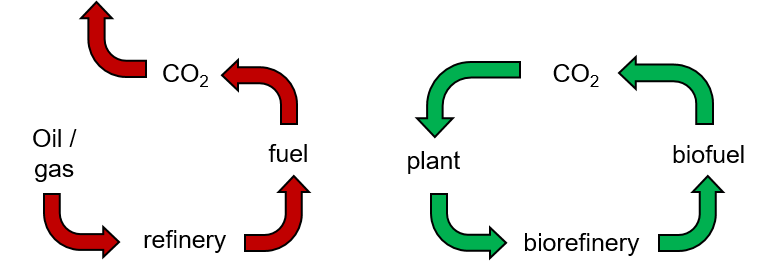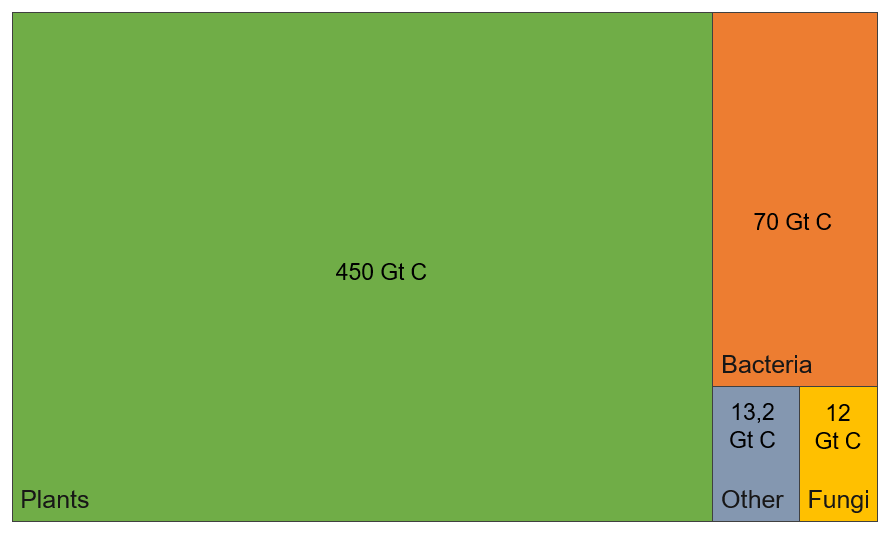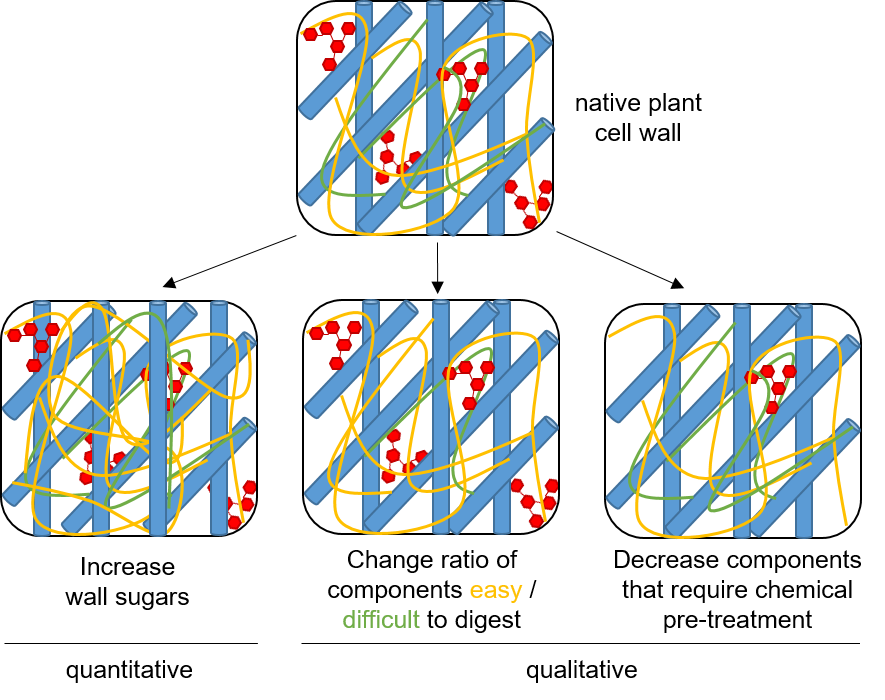Making & breaking plant cell walls: Why should we care?
In an insightful earlier Planter's Punch Niklas Jung and Thomas Perrot highlighted the way we are utilizing yeast cells as reprogrammable factories to produce tailor-made plant polysaccharides, the sugar building blocks making up the plant cell wall. The aim of that approach is not only to produce these polysaccharides, but also to get novel insights into their biosynthesis. But why do and should we even care about the plant cell wall and the components it is made up from?
The plant kingdom contributes the vast majority of biomass on our planet, estimated at around 450 billion tons (Gigatons Carbon, Gt C) (Fig.1). In contrast, humans are estimated to contribute 0.06 Gt C to the global biomass. For every human, as an example you reading this text, there are plants with 7500 times your biomass. In the bigger picture, over 80 % of all biomass is made up by plants, while all other life forms including bacteria, fungi and animals only make up the remaining ~ 20 %.
The bulk of this plant biomass is materialized in cell walls (estimated at ~ 70 %), a complex matrix surrounding every plant cell. This makes cell walls the dominant contributor to the total natural biomass. Due to the high turnover of plant biomass, e.g. by seasonal growth, annually around 120 – 170 billion tons of plant cell walls are produced (Pauly and Keegstra, 2008). To put this into perspective, the global production of all chemicals excluding pharmaceuticals in 2011 weighed in at ‘only’ 1.2 billion tons. While these numbers are astounding, only a small fraction of this renewable resource is currently utilised by us humans. This stems from the architecture of the plant cell wall due to its biological function. As the outer border of plant cells, the wall confers stability and rigidity. The recalcitrance of plant cell walls is a major benefit for the plant, as it enables the plant to withstand environmental and biological stresses, e.g. degradation by fungi or bacteria that want to munch on the plant. Anyway, this structural integrity makes plant cell walls hard to utilise, a shame considering their enormous abundance and potential as a renewable resource.
One of the major challenges humanity is facing today is anthropogenic (man-made) climate change. A major influence is based on our emission of greenhouse gases, e.g. carbon dioxide (CO2). Burning fossil fuels to generate heat, electricity or for transportation is a major source of man-made CO2 emissions. If you ever looked at the alarming atmospheric CO2 concentrations over the last centuries, you probably saw annual fluctuations. This is due to the growing season in the northern hemisphere in Spring and Summer. Carbon uptake increases due to higher photosynthetic activity, underlining the impact of plants on atmospheric CO2levels.
Biofuels are an exciting alternative to fossil fuels as they are derived from plant biomass that sequestered carbon from the atmosphere. This presents an inert, renewable system that does not rely on the extraction of finite million-year-old decomposed biomass as in the case of fossil resources (Fig.2).

As already mentioned earlier, most of the carbon taken up and metabolised by the plant is allocated to the cell wall, the major carbon sink. Unfortunately, we already discovered that the cell wall is hard to break up due to its high structural integrity. To extract sugars that can be fermented by microorganisms to produce biofuels, chemicals, heat and special enzymatic treatments are necessary. This energy-input leaves the generation of biofuels a cost-intensive process, often unable to compete with conventional fuel production.
To overcome this limitation, the plant cell wall would need to be easier to degrade. Possible mechanisms to achieve this goal include different quantitative or qualitative measures (Fig.3). Quantitatively, the overall content of plant cell wall sugars could be increased to have more biomass in the same cultivated area, thereby making the process more efficient. Another possibility is to increase the ratio of easily or vice versa decrease the ratio of hardly fermentable components of the cell wall. A different approach is to remove or decrease a certain class of cell wall components that demand the afore mentioned intense chemical pre-treatment. An interplay of the mentioned methods could result in plants easier to utilise for biofuel production to cost-efficiently replace fossil fuels.
But to be able to breed plants that fulfil these requirements without being negatively impacted in growth or the ability to survive, we first need to understand the details that determine the cell wall shape and the minimal features required to have a fully functional cell wall. Because of these reasons we are using synthetic biology as well as different genetic approaches in the framework of CEPLAS to enlighten the synthesis of plant cell wall components and the allocation of carbon to the cell wall. In the long run this will aid in the understanding of plant cell wall biosynthesis and design of plants with altered cell wall composition for commercially competitive biofuel production.
Planter’s Punch
Under the heading Planter’s Punch we present each month one special aspect of the CEPLAS research programme. All contributions are prepared by our early career researchers.

About the author
Niklas Gawenda is a doctoral researcher in the group of Prof. Markus Pauly in the Institute of plant cell biology and biotechnology at the Heinrich-Heine-University Düsseldorf. His research focuses on revealing new insights into the biosynthesis of certain plant cell wall components, e.g. by utilising a synthetic biology approach where these components are produced in yeast.
Further Reading
Voiniciuc, C., Dama, M., Gawenda, N., Stritt, F., Pauly, M. (2019). Mechanistic insights from plant heteromannan synthesis in yeast. PNAS, 116(2), 522-527. doi.org/10.1073/pnas.1814003116.
Pauly, M.,Gawenda, N., Wagner, C., Fischbach, P., Ramírez, V., Axmann, I. M., & Voiniciuc, C. (2019). The Suitability of Orthogonal Hosts to Study Plant Cell Wall Biosynthesis. Plants, 8(11), 516. doi.org/10.3390/plants8110516.
Bar-On Y.M., Phillips R., Milo R. (2018) The biomass distribution on Earth. Proc Natl Acad Sci U S A. doi: 10.1073/pnas.1711842115
Loqué D., Scheller H. V., Pauly M. (2015) Engineering of plant cell walls for enhanced biofuel production. Curr Opin Plant Biol. doi: 10.1016/j.pbi.2015.05.018
Pauly M., Keegstra K. (2008) Cell-wall carbohydrates and their modification as a resource for biofuels. Plant J 54: 559–568. doi.org/10.1111/j.1365-313X.2008.03463.x

